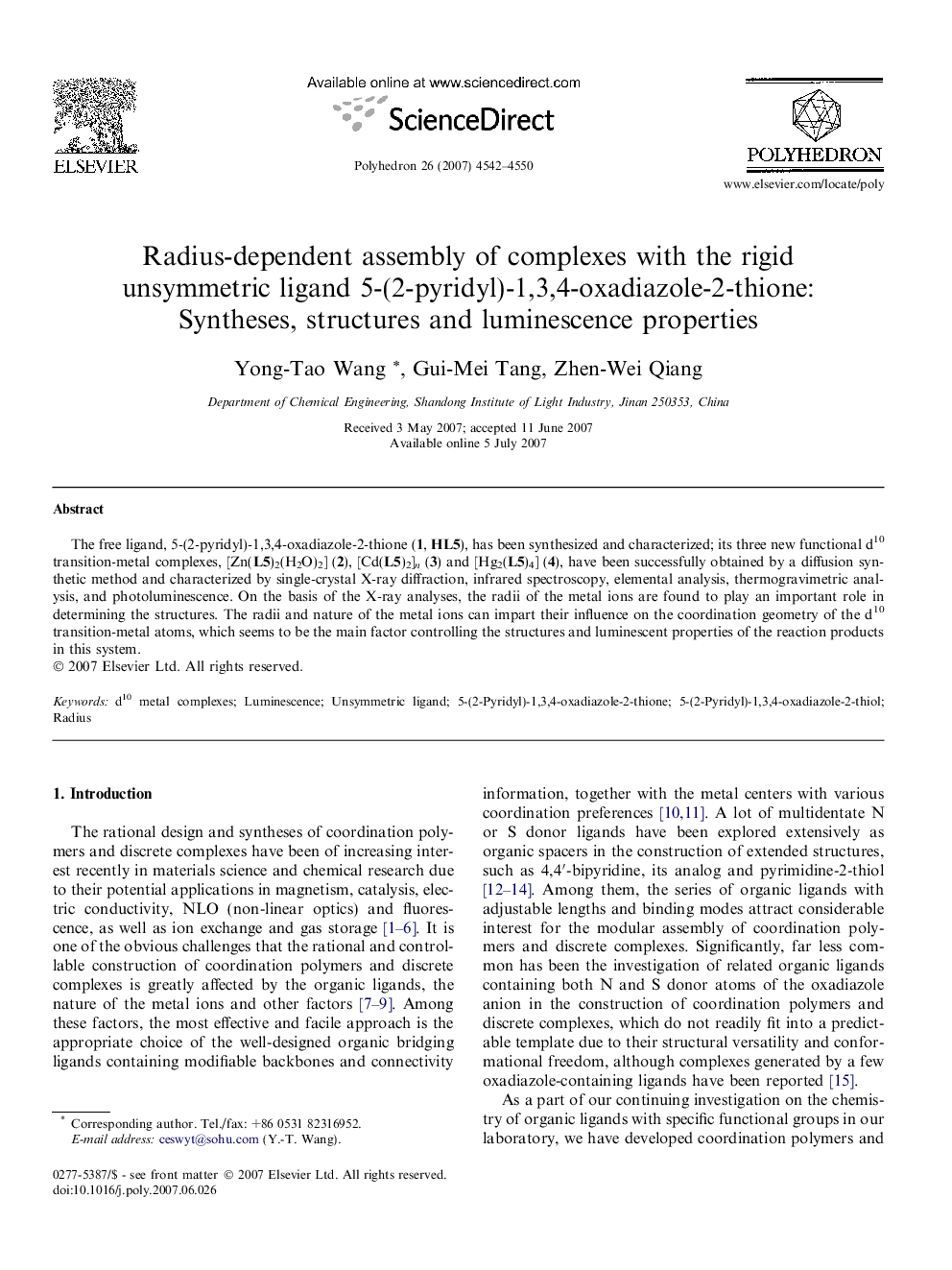| Article ID | Journal | Published Year | Pages | File Type |
|---|---|---|---|---|
| 1338338 | Polyhedron | 2007 | 9 Pages |
The free ligand, 5-(2-pyridyl)-1,3,4-oxadiazole-2-thione (1, HL5), has been synthesized and characterized; its three new functional d10 transition-metal complexes, [Zn(L5)2(H2O)2] (2), [Cd(L5)2]n (3) and [Hg2(L5)4] (4), have been successfully obtained by a diffusion synthetic method and characterized by single-crystal X-ray diffraction, infrared spectroscopy, elemental analysis, thermogravimetric analysis, and photoluminescence. On the basis of the X-ray analyses, the radii of the metal ions are found to play an important role in determining the structures. The radii and nature of the metal ions can impart their influence on the coordination geometry of the d10 transition-metal atoms, which seems to be the main factor controlling the structures and luminescent properties of the reaction products in this system.
Graphical abstractThe radius and coordination preferences of the metal centers based on the versatile nature of the rigid unsymmetric ligand 5-(2-pyridyl)-1,3,4-oxadiazole-2-thione (HL5) obviously affect the structures and luminescent properties of the coordination complexes.Figure optionsDownload full-size imageDownload as PowerPoint slide
